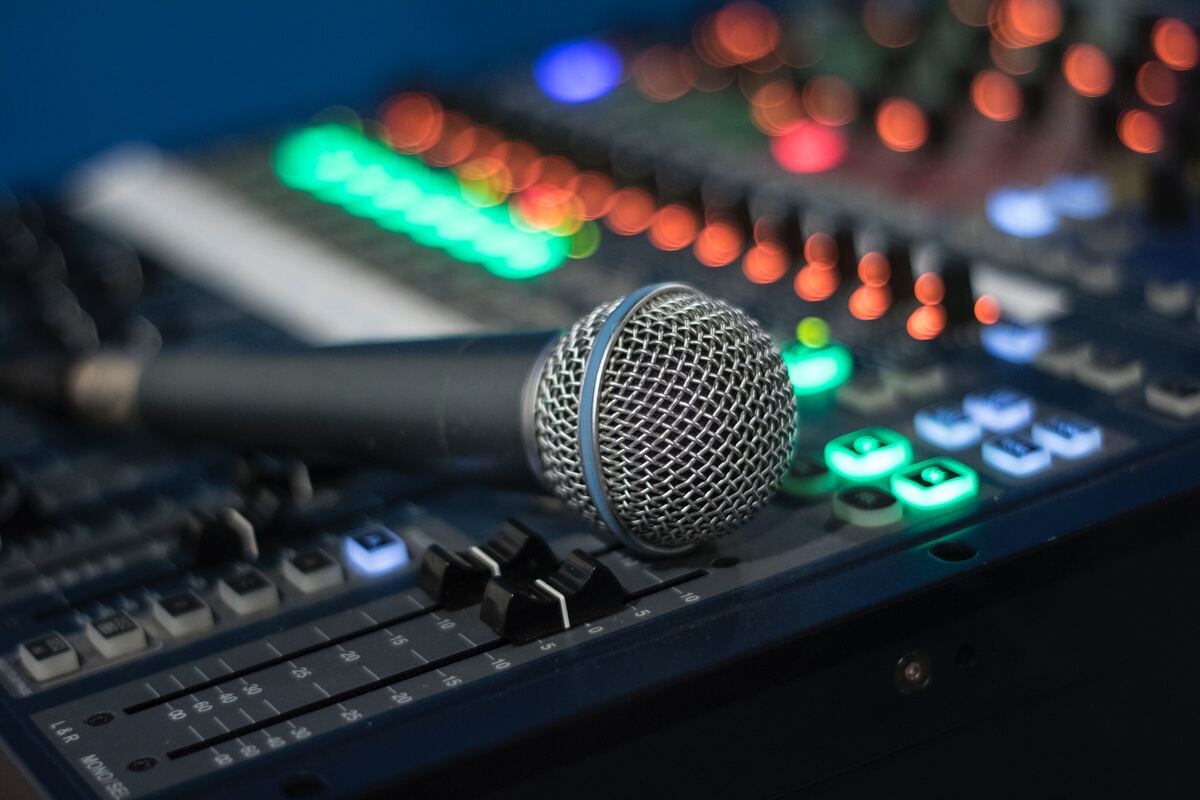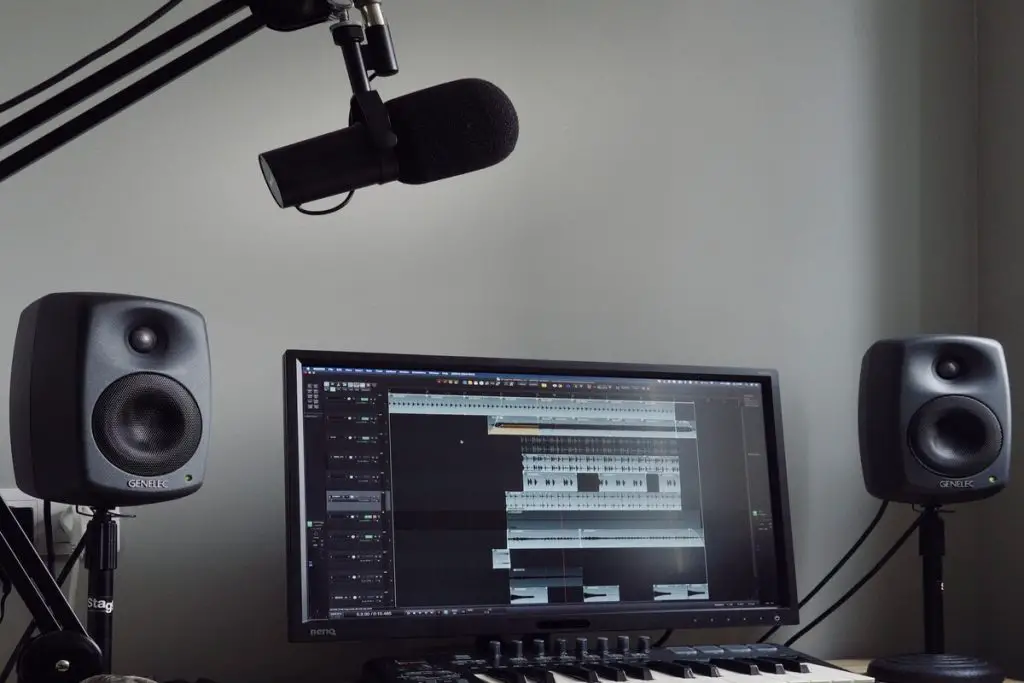Ever wondered how sound magically travels from your favorite artists’ recordings to your ears? Sound transducers hold the key to this captivating process. So what exactly is a transducer? And how do these remarkable devices transform electrical energy into the beautiful melodies that resonate within us? Let’s find out.
What is a transducer? In audio and music, a transducer often refers to a device such as a microphone or speaker that converts sound waves into electrical signals, or electrical signals back into sound waves.
How is a sound produced?
Sound is not just an abstract concept; it’s a fascinating phenomenon that surrounds us every day. So, what makes sound, sound? Sound is essentially a waveform of energy generated by mechanical vibrations. When a tuning fork or any vibrating object sets the air molecules in motion, it creates a chain reaction that propagates as sound waves

The three key characteristics of sound are wavelength, frequency, and velocity. Wavelength refers to the time period of one complete cycle of a sound wave, measured in seconds. Frequency represents the number of wavelengths per second and is measured in Hertz. Lastly, velocity refers to the speed at which sound waves travel through a transmission medium, such as air or water.
AKAI Professional MPK Mini MK3

AKAI Professional MPK Mini MK3
What is a transducer?
A transducer is a device that converts one type of energy into another. In the world of audio and music, a transducer is a device such as a microphone or speakers. A microphone, for example, acts as a transducer by capturing sound waves (mechanical energy) and converting them into an electrical signal that can be processed or recorded.
On the flip side, a speaker acts as a transducer by receiving electrical signals and converting them back into sound waves, which we hear as sound. Transducers can convert many forms of energy, such as light, heat, pressure, mechanical, and magnetic energy into electrical signals and vice versa.
How do microphones capture sound?
Microphones play a crucial role in the realm of sound transducers, acting as input sensors that convert acoustic waves into electrical signals. So, how do microphones capture sound? By utilizing a diaphragm and an electromagnetic coil, microphones convert the mechanical vibrations of sound waves into an electrical analog output signal.
Microphones come in various types, each with its unique characteristics and applications. Dynamic microphones, commonly used in live performances and studio recordings, use a moving coil to induce an output voltage signal. Electret condenser microphones employ a permanently charged diaphragm and a backplate to convert sound waves into electrical signals. Other types include ribbon microphones and piezo-electric crystal microphones.
How do loudspeakers reproduce sound?
Loudspeakers are an essential part of sound transducers, acting as output actuators that transform electrical signals into audible sound waves. But how do loudspeakers reproduce sound? By utilizing a combination of a voice coil, diaphragm, and a strong magnetic field, loudspeakers vibrate the diaphragm in response to the electrical signal, creating air disturbances that result in sound.
Loudspeakers are the final step in the journey of sound reproduction, allowing us to enjoy music, movies, and other forms of audio content. Their precise construction and design ensure that electrical signals are accurately converted back into audible sound waves. From studio monitors to home theater systems, loudspeakers play a pivotal role in delivering immersive sound experiences.

Just like microphones, loudspeakers come in various types, each with its own unique characteristics and applications. Moving coil loudspeakers, also known as dynamic speakers, are the most common type found in electronic circuits, kits, and consumer electronics. Other types include electrostatic speakers, isodynamic speakers, and piezo-electric speakers.
To ensure optimal performance and longevity of loudspeakers, it’s important to follow a few guidelines. Here’s a small table highlighting some dos and don’ts when working with loudspeakers:
| Dos | Don’ts |
|---|---|
| Position loudspeakers correctly for optimal sound dispersion | Place loudspeakers in extreme temperature or humidity conditions |
| Use appropriate amplifiers and power ratings | Overdrive or exceed the recommended power limits |
| Regularly clean and maintain loudspeakers | Use abrasive materials or solvents for cleaning |
| Calibrate the sound system for balanced audio | Neglect proper cable management and connections |
What are infrasound and ultrasound?
Sound transducers have the remarkable ability to detect and transmit sound waves beyond the range of human hearing. Infrasound refers to sound waves with frequencies below the audible range, typically lower than 20 Hz. Ultrasound, on the other hand, refers to sound waves with frequencies above the audible range, typically higher than 20 kHz.
In terms of audio production, while humans cannot hear infrasound and ultrasound, they can still interfere with the sounds we can hear if not properly handled…
In terms of audio production, while humans cannot hear infrasound and ultrasound, they can still interfere with the sounds we can hear if not properly handled during the recording and mixing processes. Unwanted low-frequency vibrations (infrasound) can cause “muddiness” or a lack of clarity in a mix. Similarly, ultrasonic frequencies can cause intermodulation distortion when they interact with audible frequencies. To avoid this, infrasound is typically filtered out.
Advantages and disadvantages of transducers
Sound transducers play a crucial role in the world of audio and communication. They enable us to hear and enjoy sound in various forms. However, like any technology, they come with their own set of advantages and disadvantages.
Advantages of transducers
- High-fidelity sound reproduction: Sound transducers, such as dynamic microphones and moving coil loudspeakers, are capable of reproducing sound with exceptional clarity and accuracy.
- Wide frequency response: Many sound transducers can capture or reproduce sound across a broad frequency range, ensuring a rich audio experience.
- Enhanced communication: Microphones and loudspeakers enable clear and effective communication, whether in professional settings or everyday conversations.
Disadvantages of transducers
- Limitations in frequency response: Some sound transducers may have limitations in capturing or reproducing certain frequencies accurately, leading to potential audio distortion.
- Size and portability: Certain types of sound transducers, such as large loudspeaker systems, may be bulky and less portable, limiting their use in certain contexts.
- Complexity and cost: High-quality sound transducers can be complex in design and require precise engineering, resulting in higher production costs.
If you want even more great tips and information, check out the video below.
Frequently Asked Questions (FAQ)
Here are some common questions about sound transducers:
How do transducers work in audio equipment?
In audio equipment, transducers work by using a diaphragm, coil, and magnet to convert between sound and electrical signals. When sound waves hit the diaphragm of a microphone, it causes the coil to move in a magnetic field, generating an electrical signal. In a speaker, the process is reversed: an electrical signal causes the coil and diaphragm to move, creating sound waves.
Can a microphone be used as a speaker?
While a microphone and a speaker both convert sound, they are designed for different purposes and operate in opposite directions. While it is possible to use a microphone as a makeshift speaker in some cases, the sound quality and performance will be limited. It is recommended to use dedicated speakers for optimal sound reproduction.
Why are transducers important in audio production?
Transducers are crucial in audio production because they allow sound to be captured, processed, and reproduced. Without transducers, it would be impossible to record sound, manipulate it electronically, or play it back through speakers or headphones.
Different types of transducers, such as dynamic microphones or condenser microphones, can capture sound with different characteristics, giving audio engineers a range of options for capturing the best sound for a particular situation.
Conclusion
And that’s a wrap! We’ve dived into the fascinating world of sound transducers and explored their role in capturing and reproducing sound. And did I cover everything you wanted to know? Let me know in the comments section below. I read and reply to every comment. If you found this article helpful, share it with a friend, and check out my full blog for more tips and tricks on sound production. Thanks for reading and keep rocking those sound waves!
Key takeaways
This article covered the following key takeaways:
- Sound transducers are devices that convert electrical energy into mechanical vibrations to produce sound.
- They include both input sensors, like microphones, and output actuators, like loudspeakers.
- Sound transducers can capture and reproduce sound across a wide frequency range.
- Various types of sound transducers are available, each suitable for different applications.
- Consider factors like sound quality, versatility, and durability when choosing a sound transducer.















